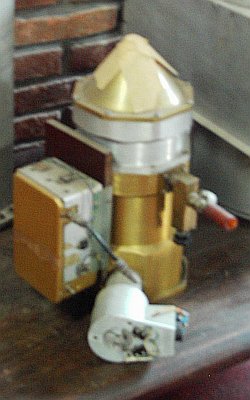 Bolometer
Bolometer

Is a device for measuring the power of incident electromagnetic radiation via the heating of a material with a temperature-dependent electrical resistance. It was invented in 1878 by the American astronomer Samuel Pierpont Langley who named it after the Greek word "bole", for something thrown, as occurs with a ray of light.
The first bolometers consisted of an absorptive element, such as a thin layer of metal, connected to a thermal reservoir (a body of constant temperature) through a thermal link. The result was that any radiation impinging on the absorptive element raised its temperature above that of the reservoir.
In 1961 the US physicist Frank Low invented the gallium doped germanium bolometer which extended the range of the observable spectrum to much longer wavelengths. When infrared radiation hits the germanium, it warms the metal and changes its conductivity. The change in conductivity can be measured and is related to the amount of infrared radiation entering the container. The germanium bolometer works best at an extremely low temperature so usually is placed in a metal container (Dewar) filled with liquid helium which cools it to 4 degrees Kelvin.
Bolometers are a key element in several balloon-borne experiments developed in the domain of infrared astronomy. The first use of a germanium bolometer was in 1963 during a balloon flight performed to make infrared observations of Mars. Beginning in 1966, the Goddard Institute of Space Sciences used balloons to survey the sky at 100 microns. Their program lead to the discovery of about 120 bright infrared sources near the plane of our Milky Way Galaxy.
Among the several balloon-borne programs that made use of bolometers we can mention the 102-cm Far Infrared Telescope flown more than twelve times by the Smithsonian Astrophysical Observatory and the University of Arizona and BLAST a stratospheric telescope conceived to map the magnetic field structure of many different star-forming regions.
The bolometer in the picture correspond to the ALIR telescope, a project to develope a far infrared telescope carried out in Argentine in late 70's and early 80's, which was cancelled. Today the detector is located in a museum in Buenos Aires.

